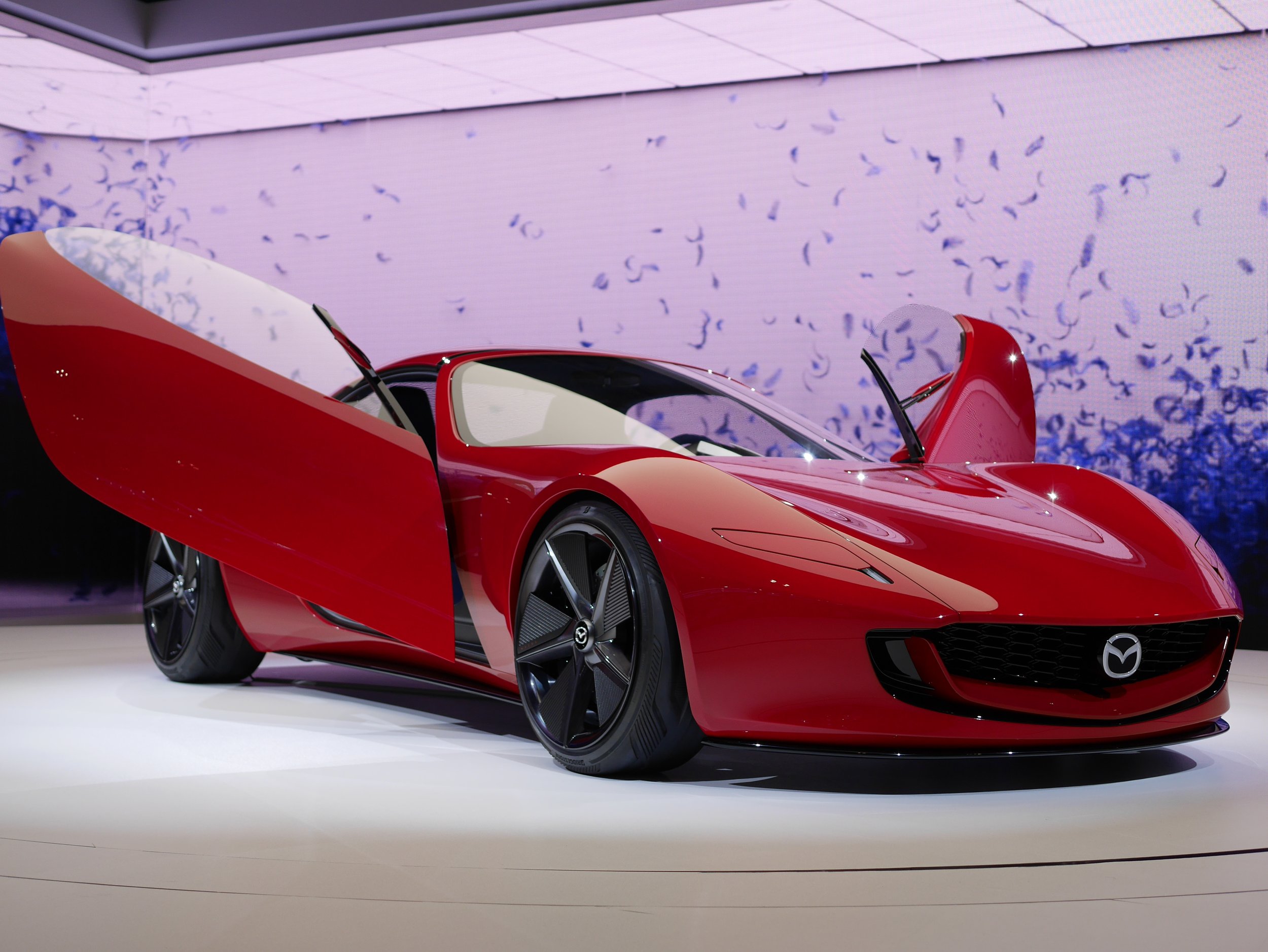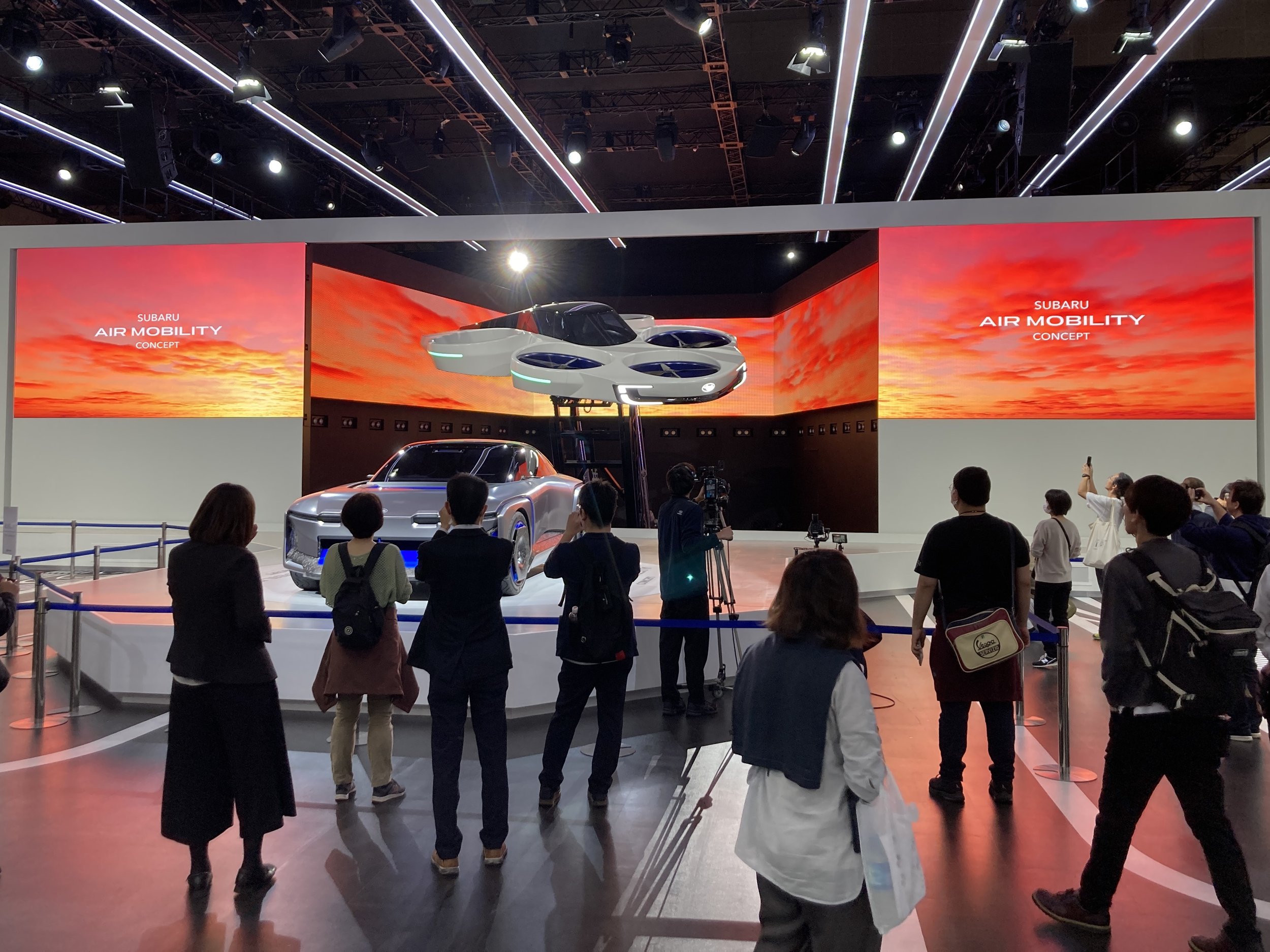3 Takeaways from the 2023 Japan Mobility Show
/The Tokyo Motor Show is back for the first time since 2019. Rechristened as the Japan Mobility Show after a pandemic-induced hiatus, this signature event for Japan’s automotive industry returns with a broader theme that goes beyond what most expect from a typical auto show. True to its rebranding, the Japan Mobility Show is about much more than cars. From personal mobility devices to private jets, this event is about anything that helps you get from point A to point B.
As a car enthusiast, I once again carved a few hours out of my schedule to attend this year’s event. What follows are three observations that will give you an idea of what to expect for future iterations of the Japan Mobility Show.
1. Exhibitors Ran with the New Theme
I’ve attended every Tokyo Motor Show held since I moved to Japan in 2009, and this year’s mobility show was by far the most unique version of the event. With everything from life-sized flying car concepts to a greater emphasis on personal mobility devices strewn throughout the sprawling venue (Tokyo Big Sight), it was obvious that exhibitors understood the assignment: the show is now about the concept of movement instead of merely a place to show off their latest vehicle lineups.
Going forward, I expect this theme to broaden the appeal of the show, which used to be more closely associated with motorheads such as myself. According to the show’s organizer, the Japan Automobile Manufacturers Association (JAMA), the 2023 Japan Mobility Show attracted 1,112,000 visitors. As word gets out about the content of the show, it is likely that number will increase for the next one.
2. Car Companies Challenged Conventions
Beyond the new theme, the reimagined Tokyo Motor Show inspired exhibitors to experiment with their floorspace in a variety of creative ways, far beyond what I’ve observed in the past 15 years. For example, Mazda’s entire presence on the main show floor was a shrine to one car: the venerable Mazda Roadster. The only exception was the captivating Mazda Iconic SP concept car, which took center stage. All of this was a welcome treat for sports car fanatics like me. However, those looking for something more conventional, such as the Mazda CX-60 crossover, needed to have a reservation for one of the test drive activities, located outside of the venue.
Subaru’s floorspace was Mazda’s inverse. With the exception of the Subaru Sport Mobility Concept neither of their sports cars were on display. No halo vehicles here—just a variety of crossovers, wagons, and SUVs. If you wanted to get a feel for the WRX S4, you needed to make a reservation in advance for a test drive.
Lesson learned: if you plan to attend the Japan Mobility Show in the future, take a close look at the website in advance to see exactly where and how to access the cars you want to experience. Planning ahead is critical, as the venue can get incredibly crowded, even on weekdays.
That being said, not every manufacturer shook up the classic auto show formula. Nissan, for example, put all its cards on the table. Virtually every vehicle they make (or plan to make) was on display for those willing to fight the crowds for a gander at them.
3. The Show Continues to Evolve, Inside and Out
In the years leading up to the Tokyo Motor Show’s pandemic hiatus, the event was evolving into something more akin to a festival, spilling out of the event halls and into the streets and outdoor venues of Tokyo’s Ariake district. This year’ show leaned even heavier into outdoor events and test drive opportunities. As mentioned above, several vehicle models were exclusive to test drives, which took place on the backside of the venue against the backdrop of the iconic Tokyo Gate bridge.
Motorsports fans had plenty to enjoy. One of this year’s most enthralling events was the gymkhana competition, where seasoned drivers pushed cars of all makes, models, age, and drivetrain types to their limits of traction and beyond.
The Future of the Japan Mobility Show
More now than ever before, JAMA is going all out to ensure the Japan Mobility Show maintains relevancy in a rapidly changing automotive industry. Never before has the show been so forward looking. By redefining the motor show as a mobility show, JAMA is attempting to create an event that appeals to the masses. Based on the intense crowds of eager attendees that squeezed into Tokyo Big Sight on a weekday morning, JAMA seems to be succeeding in this endeavor.





